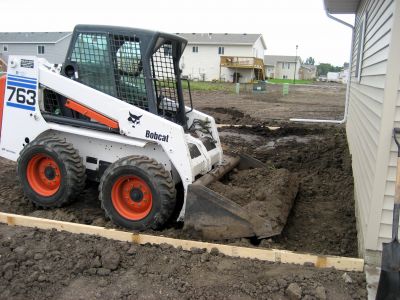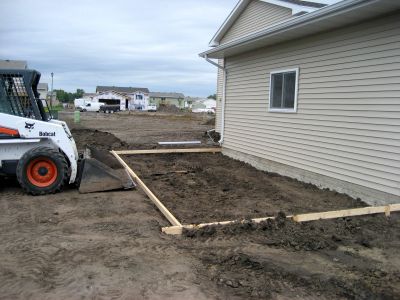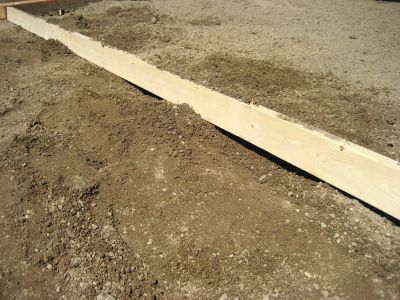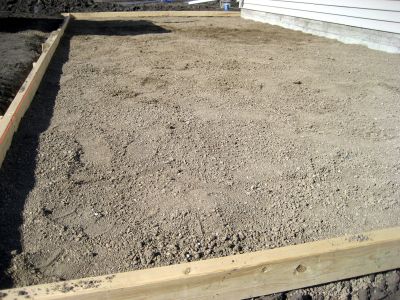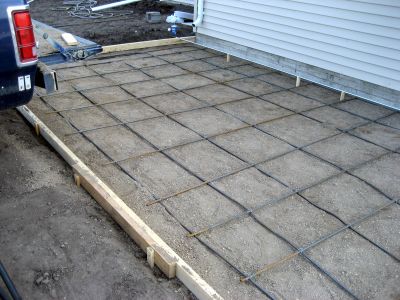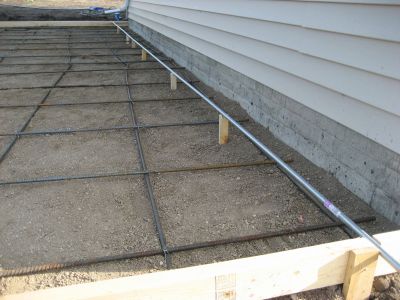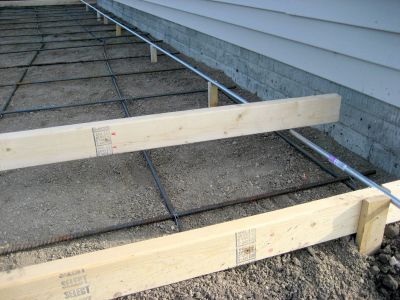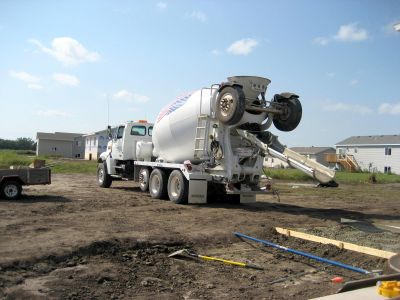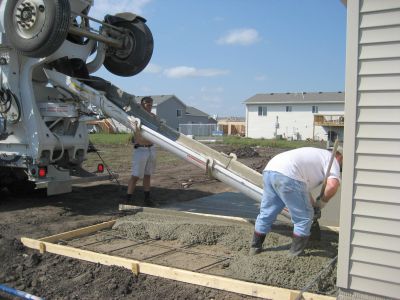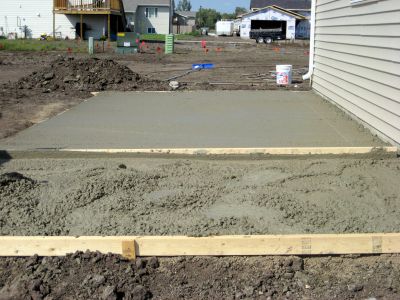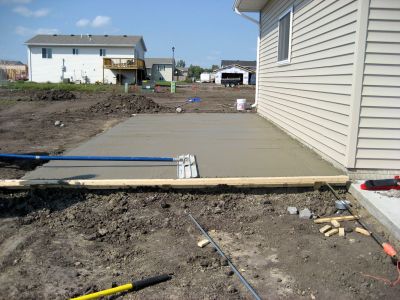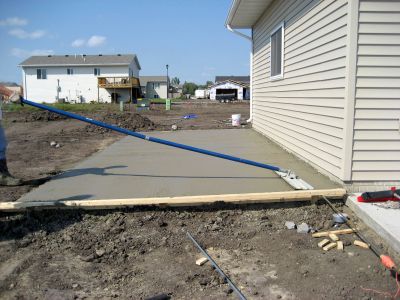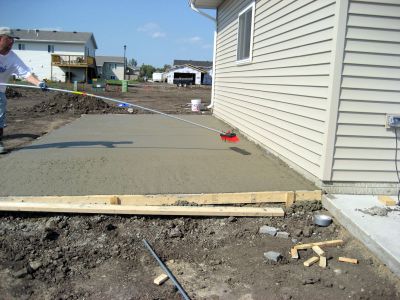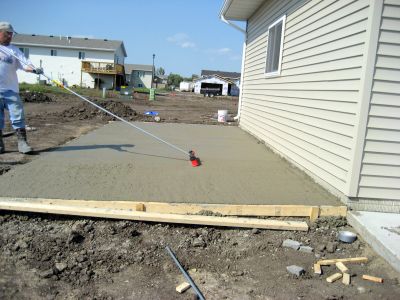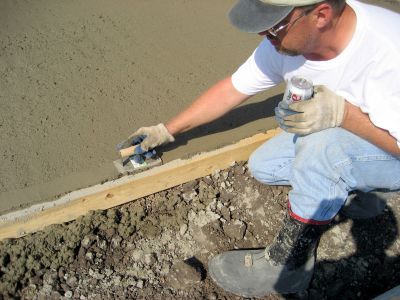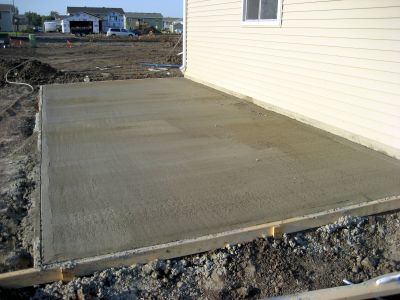This week I've had the 'fun' of installing a cement parking pad next to a garage. I'm not a great concrete finisher, so anyone who asks me to help will get less than perfect results. Finishing concrete is an art, but if your willing to accept a less than perfect job, then 'maybe' you might try pouring your own.
The pad I poured was 11 x 24. Plenty big for someone like me who doesn't have a lot of concrete experience. The concrete guys around here charge and arm & a leg, and are all busy. But now that I've finished pouring the pad, I do have to say that I have a respect for them as it would have taken a good crew a long afternoon to do the job. It took me several days (not working full days tho).
Outlined are steps and pictures of how I poured the pad. Like skinning a cat, there's more than one way.
This pad needed to be level with the surrounding landscaping (ie not sticking up 4 inches for a mowing headache). First thing I did was create a form out of 2x4 boards. In our area, code says that a 4" pad is acceptable. In your area it might need to be 6". Check your codes! I then dug-in the form so it was level with the landscaping, yet sloped away from the garage.
Next be sure your form is square. Do this by running a tape measure from bottom left corner to the upper right corner. This measurement should be the same as measurement from the bottom right corner to the upper left corner. If not, adjust your framework. Pound your stakes so they are flush with the top of the framework (prevents the screet board from catching on them). Then screw the stakes to the framework. I always screw out so the screws do not protrude into the cement (making removal later much harder).
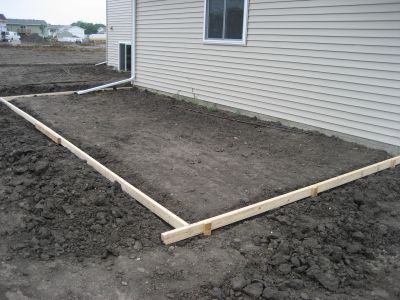
Since we wanted the parking pad to be level with the landscaping, we then needed to remove about 7" of dirt from the middle of the framework. The soil was hard -- really hard. Digging it by hand would have taken a week! So a skidsteer was rented. I removed one board of the form, and dug-out the inside using the skidsteer. A real life saver for this job.
